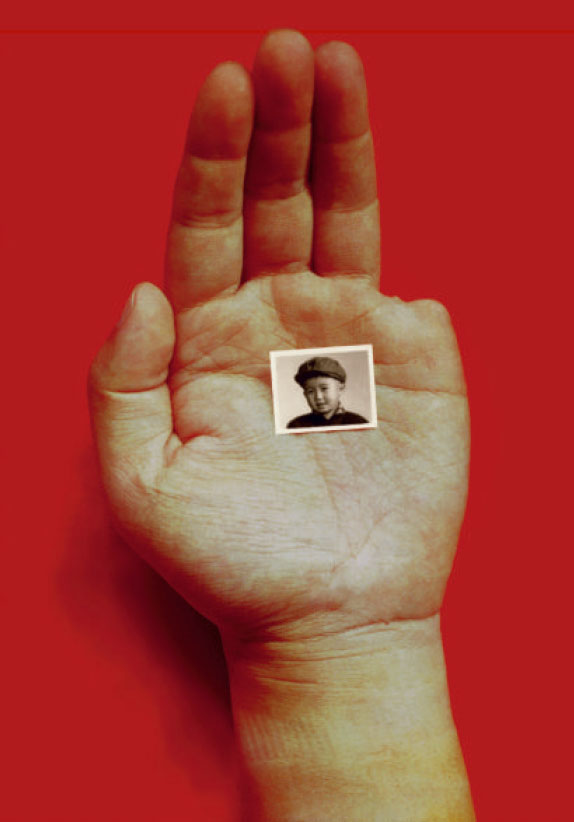
These Self-Portraits must have really, really hurt
Suffering for your art is taken to a whole new level in this group of images taken from 500 Self-Portraits
When we think of the archetypical suffering artist, we tend to envision sculptors or painters wracked either by existential pain or the fear of financial ruin, rather than genuine, physical harm. However, as our new book 500 Self-Portraits makes clear, the route to artistic greatness often deals out some very hard knocks.
Sheng Qi, Memories (Me), 2000 (above) This Chinese artist trained as a painter, graduating from the Beijing Academy of Art and Design in 1988, just a year before the Tiananmen Square protests. Following Tiananmen’s violent suppression, Qi chopped off the little finger on his left hand, burying it in a porcelain flowerpot. He kept this act of protest secret for a decade. "In 1998 I went back to Beijing and I realised personal history can be part of social history, so I decided to take a photograph of my own hand and put a childhood picture in the middle. Then I blew it up and showed it. When I published it, it was no longer my private life story, it became public.”
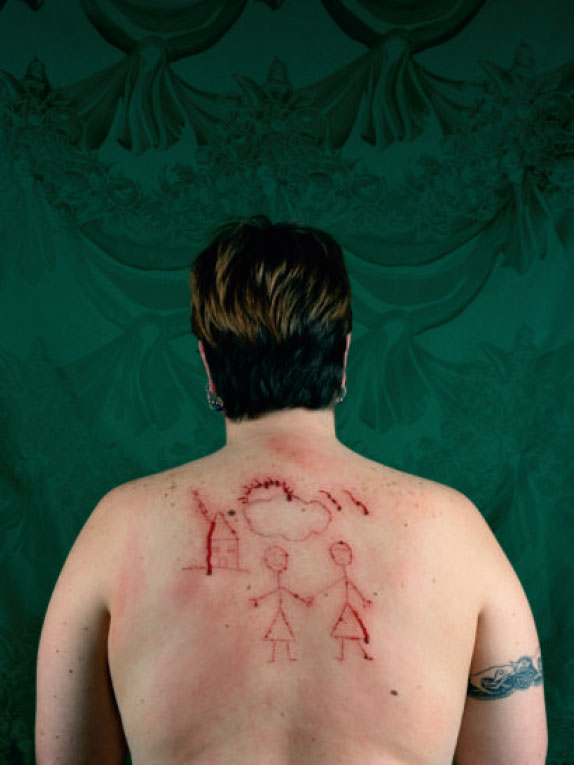
Self-portrait/Cutting (1993) by Catherine Opie The medium might be shocking, but Catherine Opie’s portrait expresses quite a traditional longing: domesticity. This American photographer, fine artist and gay-rights activist once had ambitions to become a school teacher and, as Opie’s gallerist Shaun Caley Regen told the New Yorker, Self-Portrait/Cutting “was about an unattainable ideal - two women, a house, whatever it was she felt she couldn’t have - cut into her back.”
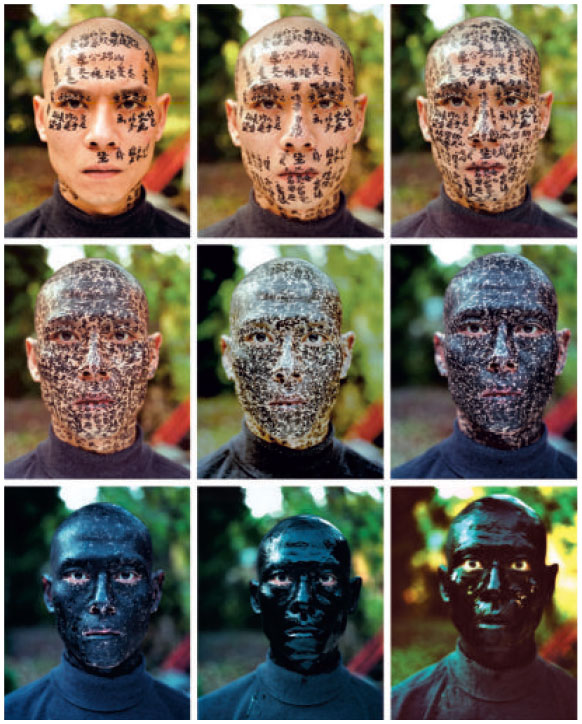
Zhang Huan, Family Tree (2001) Having ancient texts written on your face might sound fairly painful, though it isn’t the most extreme work this Chinese artist has put himself through. His 1994 performance, 12 Meters Square, saw the artist cover himself in honey and fish sauce, before sitting nude and immobile in a fly-blown public lavatory. Family Tree is a little more sanitary. Huan commissioned a trio of calligraphers to write proverbs, descriptions of family relations and other literary extracts on his face, until his features were entirely obscured by the ink.
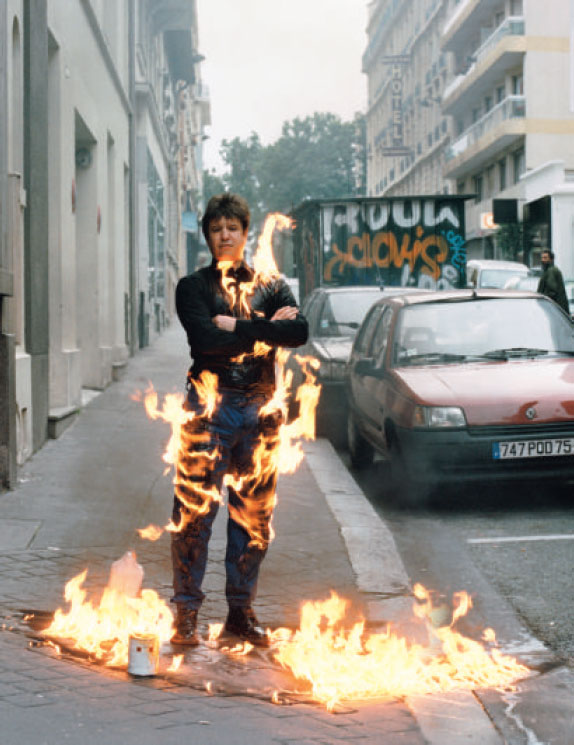
Adel Abdessemed, Je Suis Innocent (2012) The Algerian-born artist lived through the country’s civil war, and appreciates the wafer-thin divide between civilised behaviour and barbarism. His flaming self-portrait is part of a wider body of work, which includes videos of animals being clubbed to death, and sculptures of Christ on the Cross fashioned from razor wire. “As artists, we must generate tensions for something very positive and extraordinary to come out,” he told the New York Times in 2015. “If we don’t put our finger on a problem, how will it get proper attention?”
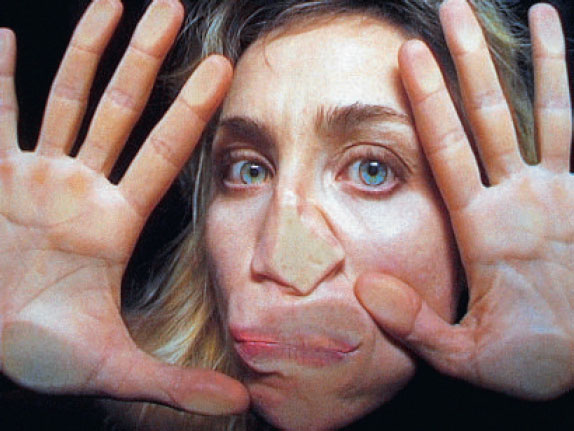
Pipilotti Rist, Open my Glade (Flatten) (2000) Why is the acclaimed Swiss video artist ramming her face up against the screen in this still from her acclaimed 2000 work? Well, as the artist explained back in January 2017, when the footage was screened in Times Square, it is a painful attempt to break the fourth wall. “The human being wants to transgress any screen and jump out onto the square,” she said. “She wants to jump out of her skin and melt with you.”
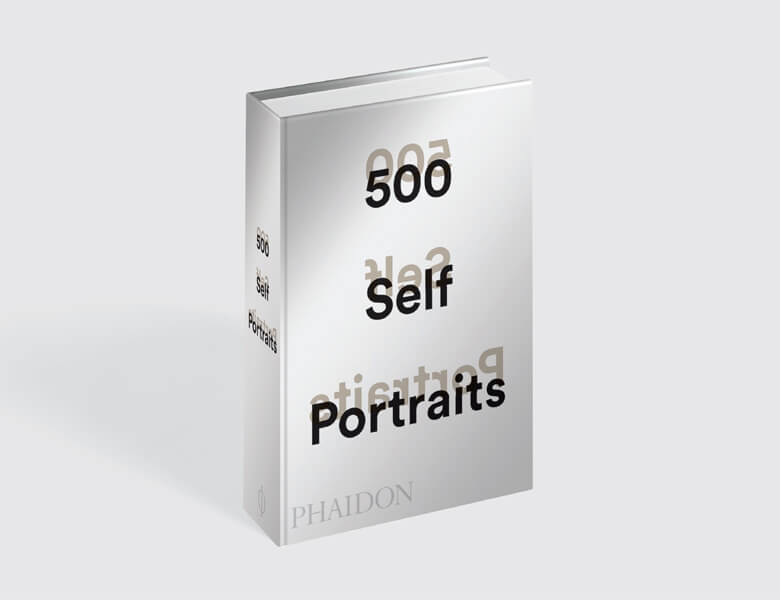
For more on these and slightly less painful personal renderings order a copy of 500 Self-Portraits here.